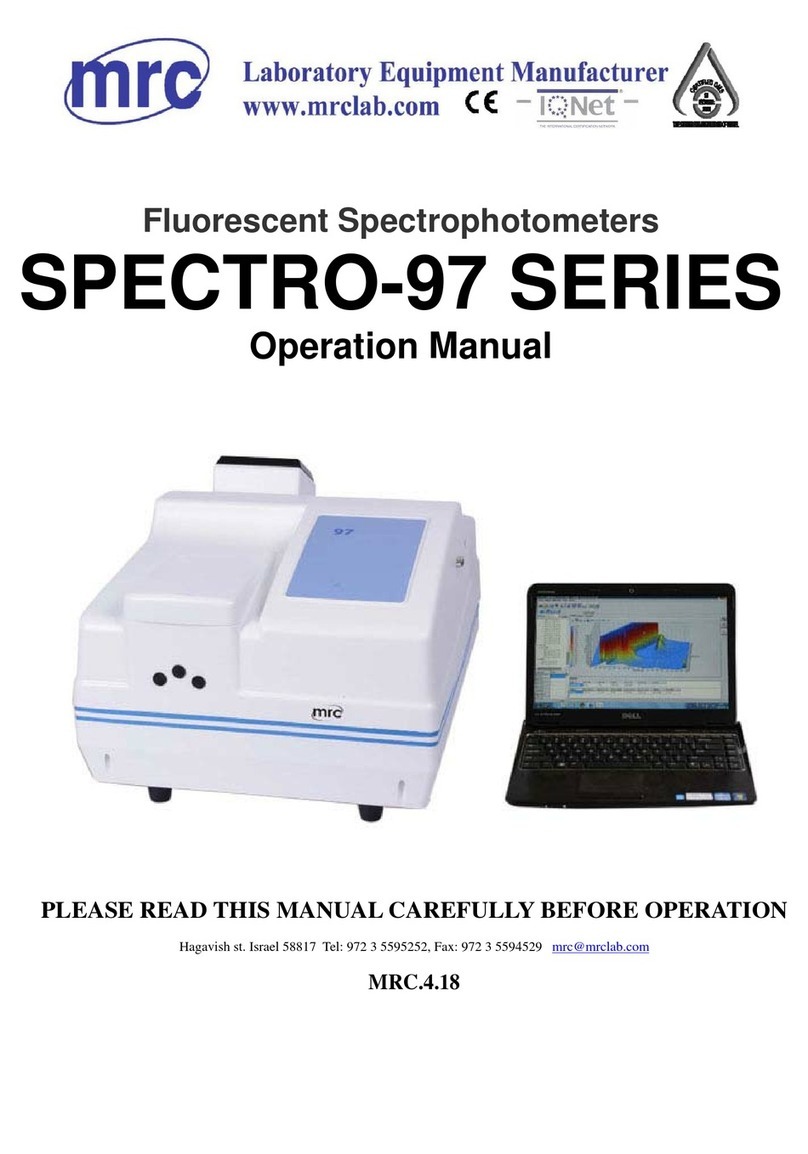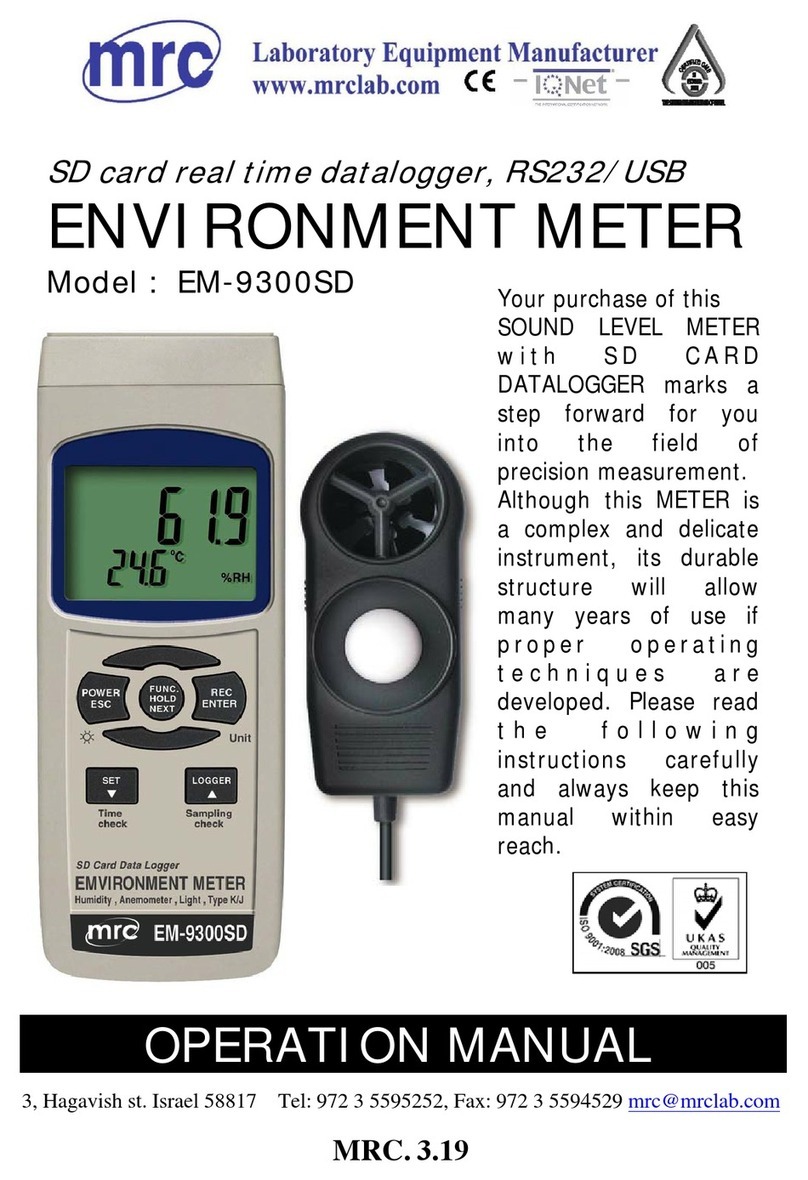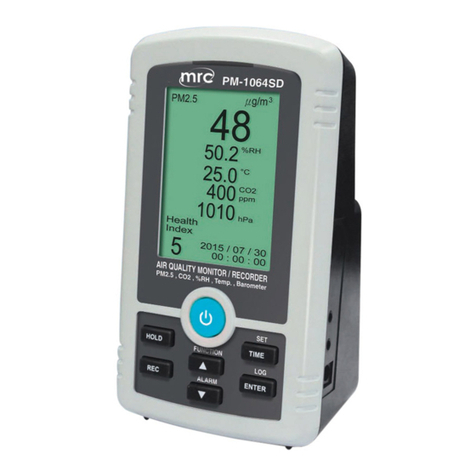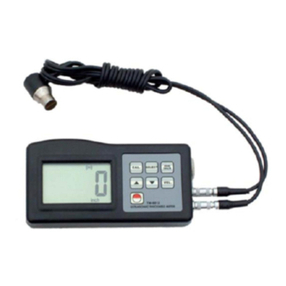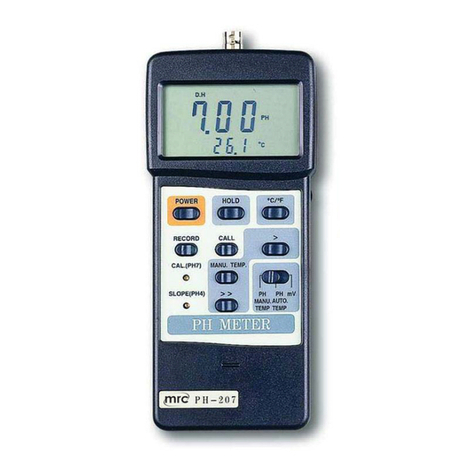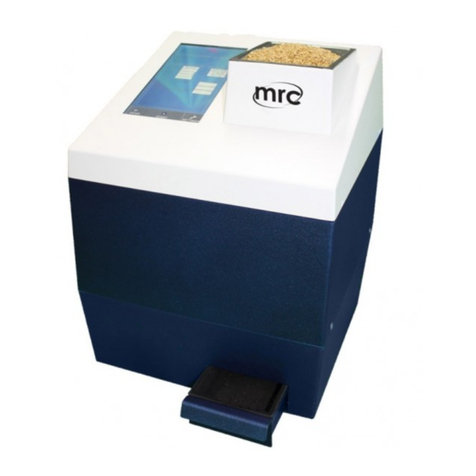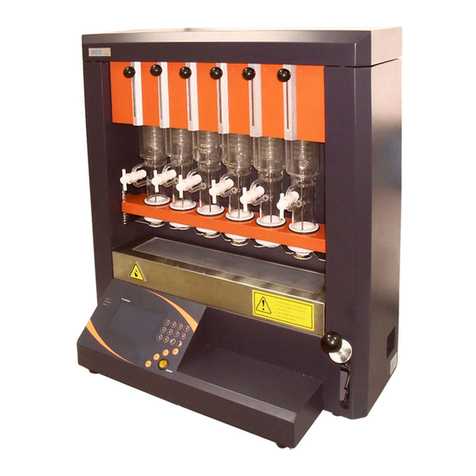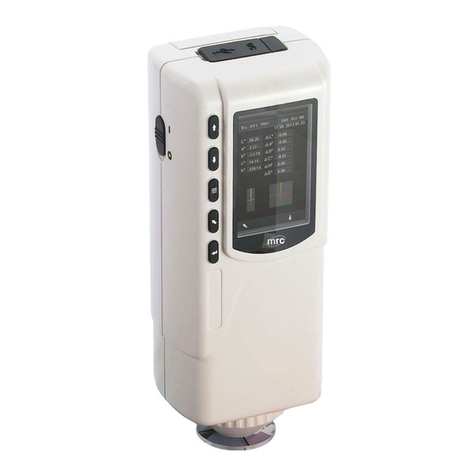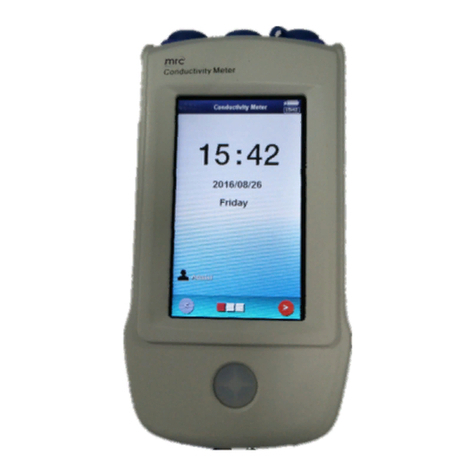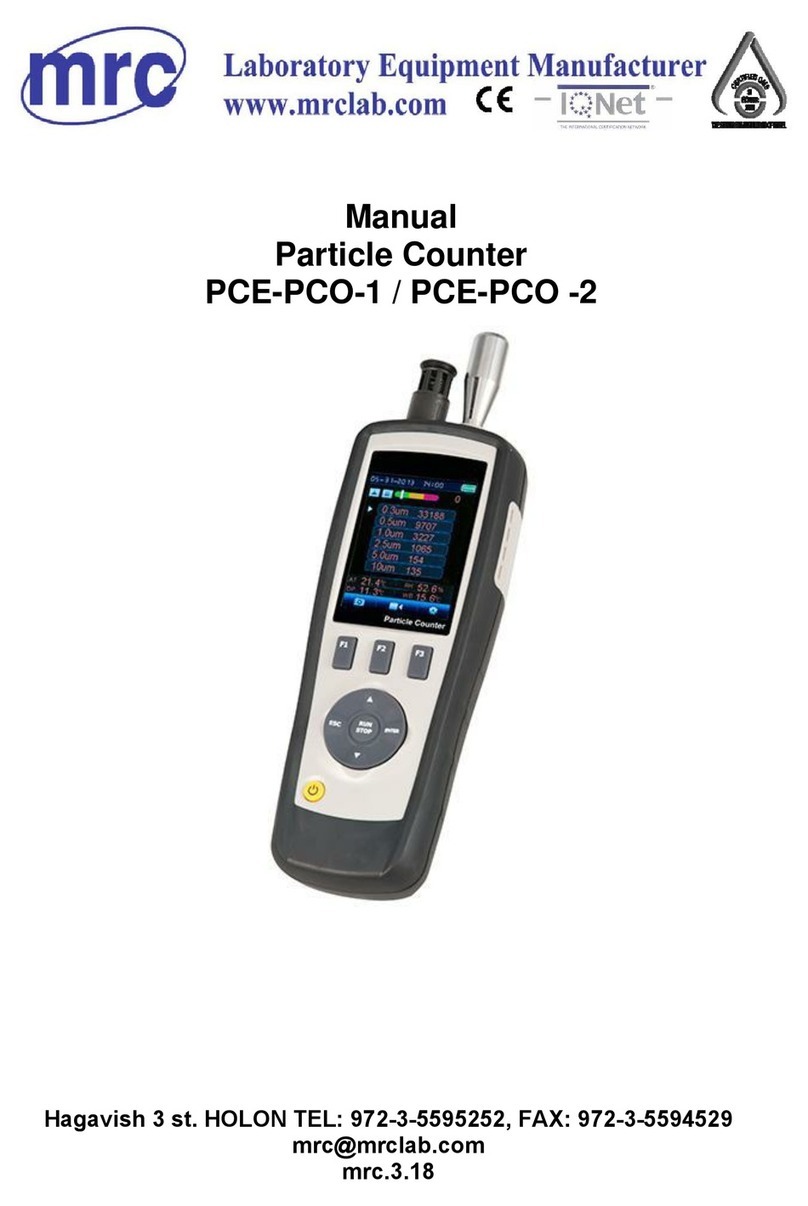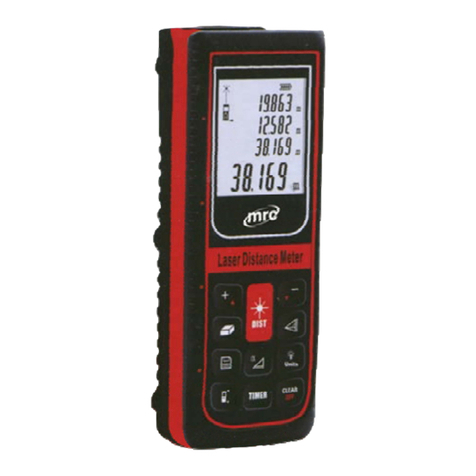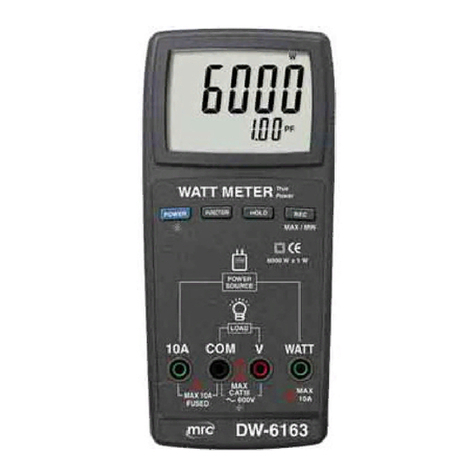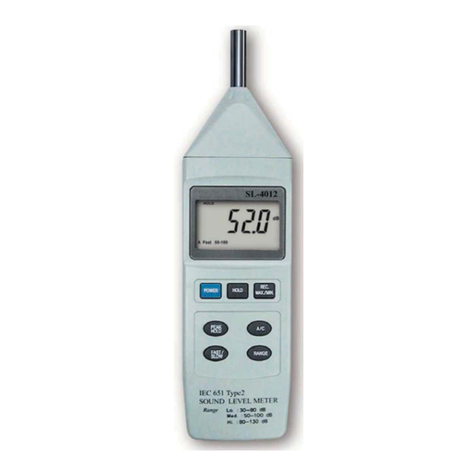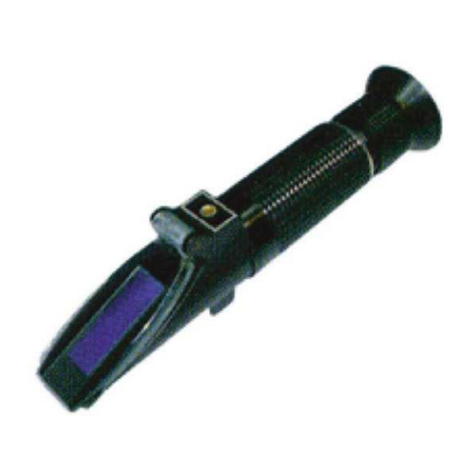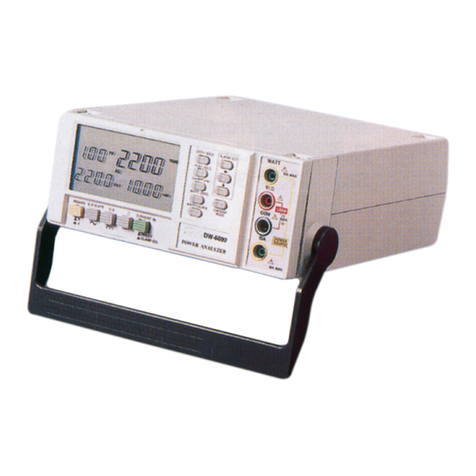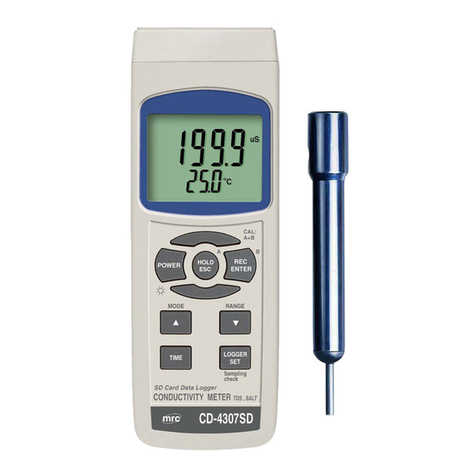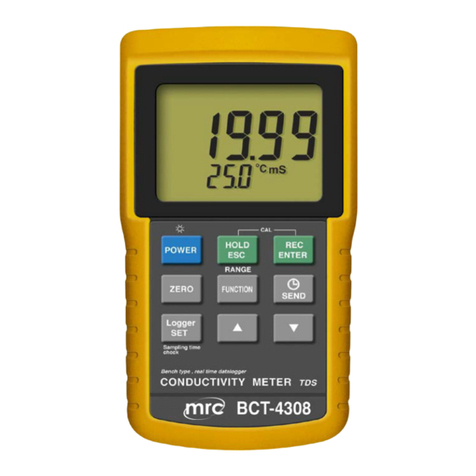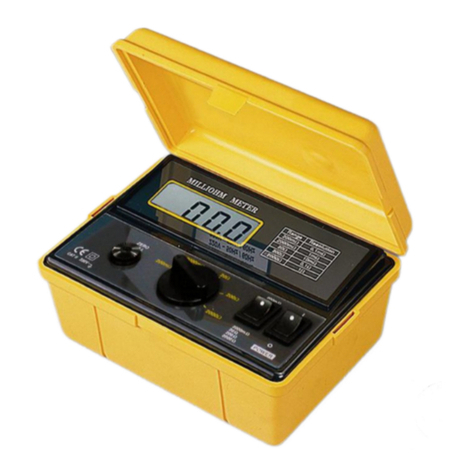2
there is a plastic bottle which
contains KCl powder. Please add
appropriate deionized water in the
bottle until it reaches the tick mark
(20mL) of the bottle. Then shake it
up.
2. You can also weigh 55.9g KCl
powder and dissolve it in the
250ml deionized water.
How to prolong the service life of
the electrode?
1. The electrode can not be used to
measure oil sample, sticky sample
and sample full of tiny particles.
2. The electrode is not suitable for
non-aqueous titration.
Why must you control temp.
during measurement?
1. The pH value of solution is
affected by temperature.
2. The temperature of solution is 10
during measurement. At this
moment, pH displayed is the pH
value at 10. If you want to know
pH value at 25, you should raise
the solution temperature to 25.
PH meter has the temperature
compensation function which can
not calibrate pH value at 10 to
pH value at 25.
How often does electrode need
calibration?
1. You need to calibrate electrode
with standard buffer solution
before each performance.
2. You still need to calibrate
electrode after using it for two
hours.
Why is there white powder
adhering to electrode cap or
electrode shell surface?
This is caused by KCl salting out
and will not affect electrode
function. You can rinse it with
deionized water.
How to clean electrode?
1. Adhered with metal ion: please
immerse the electrode in HCl
solution(0.5mol/L) for 5 minutes.
You should stir the 0.5mol/L HCL
solution with electrode quickly
several times and take it out. Then
rinse it with deionized water and
immerse it in the KCl solution (3
mol/L) for 4 hours.
2. Adhered with organics: please
immerse the electrode in absolute
ethyl alcohol (or solution which
can dissolve this organics) for 15
minutes. Stir solution with
electrode before taking it out and
then rinse it with deionized water.
Finally immerse it in the KCl
solution (3mol/L) for 4 hours.
Note: Since the material of electrode
shell is PC (polycarbonate), sample
solution which contains organics
may corrode electrode outer shell.
3. Adhered with inorganics: please
immerse electrode in EDTA
solution (0.1mol/L) or HCl
solution (0.1mol/L) for 15 minutes.
Then stir solution with electrode
quickly for a while before take it
out and rinse it with deionized
water. Finally, immerse the
electrode in KCl solution
(3.0mol/L) for 4 hours.
4. Adhered with protein: please
immerse electrode in HCl solution
(0.1mol/L) which contains 1%
pepsin for 15 minutes. Then stir
solution with electrode quickly for
a while before take it out and rinse
it with deionized water. Finally,
immerse the electrode in KCl
solution (3.0mol/L) for 4 hours.
5. Adhered with greases: please
immerse it in weakly alkaline
detergent for 15 minutes and Then
stir solution with electrode quickly
for a while before take it out and
rinse it with deionized water.
Finally, immerse the electrode in
KCl solution (3.0mol/L) for 4
hours.
6. Regeneration of glass sensitive
membrane: please immerse the
electrode in 4%HF solution for 3-5
seconds. Then rinse it in 1:1 HCl
for 10 seconds. Then rinse it with
distilled water and immerse it in
KCl solution (3mol/L) for 24
hours.
Note: If glass sensitive membrane is
regenerated for many times, it will
be damaged eventually.
Remarks:
Within one year from the production
data, the product should meet with
technical specifications.












